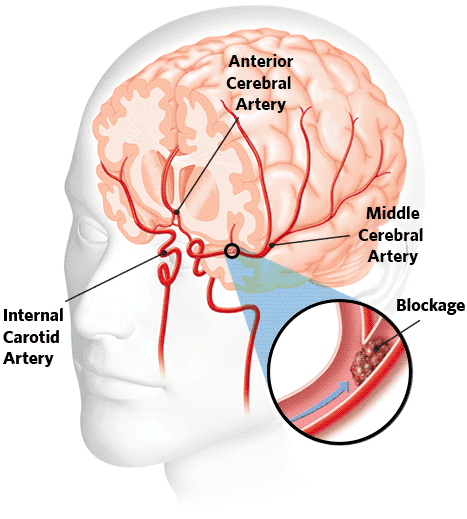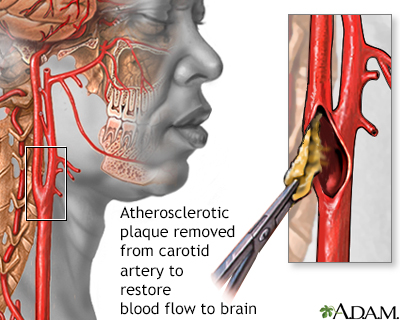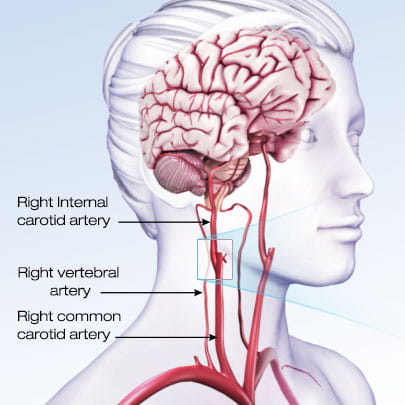Thinking about your health, especially as you get a little older, becomes a very real part of daily life. For someone around Tia Kemp age 47, knowing about certain health conditions can make a significant difference. One such condition, often talked about but perhaps not fully grasped, is a transient ischemic attack, or TIA. This isn't just some medical term; it’s a warning signal your body might send, and paying attention to it is truly important.
A transient ischemic attack, or TIA, is that, a short period of symptoms that look a lot like those of a stroke. It happens when blood flow to the brain gets blocked for just a brief time. This blockage is usually temporary, so the symptoms typically don't hang around for long, often lasting only a few minutes. Still, even though it's brief, a TIA is a serious matter and needs immediate attention, almost like a medical emergency, so you know, it’s not something to just brush off.
Understanding what a TIA means for someone like Tia Kemp at age 47, or anyone in that general age group, is quite important for staying well. It's often a sign that a more significant event, like a stroke, could be possible or even coming soon. Because of this, getting a quick check-up if you experience any of these symptoms is absolutely vital. It helps health professionals figure out what caused it and then decide on the best ways to help you, which is pretty essential for your future health, really.
- Photos Of Naked Old Ladies
- Wild Child St Pete
- Tornado Warning Issued For Branch County Thunderstorm
- Paris La Defense Arena
- Oak Park Des Moines
Table of Contents
- Understanding TIA: What It Means at Age 47
- The Brief Blockage and Its Impact
- Why Prompt Evaluation is Vital
- TIA vs. Stroke: Knowing the Difference
- Related Conditions and Prevention
- Living with TIA and Finding Support
- Frequently Asked Questions About TIA
- Conclusion: Staying Alert at 47 and Beyond
Understanding TIA: What It Means at Age 47
A transient ischemic attack, or TIA, is basically a temporary disruption in the flow of blood to the brain, or what we call cerebral blood flow. This temporary blockage can also affect the spinal cord or the thin layer of tissue at the back of the eye, known as the retina. For someone like Tia Kemp at age 47, this information is particularly relevant because age can be a factor in various health conditions, so, being aware now can help in the long run.
The primary difference between a major stroke and a TIA, which some call a minor stroke, is how much tissue is affected and if there's lasting damage. Unlike a full stroke, a TIA might not damage brain cells permanently and usually doesn’t cause lasting physical challenges. However, it’s a very clear signal that something needs attention, almost like a smoke alarm before a fire, you know? It's a chance to take action before a more serious event.
Symptoms of a TIA can be quite varied, but they mimic stroke symptoms. These can include sudden weakness or numbness on one side of the body, trouble speaking or understanding speech, vision changes, or sudden dizziness. These short symptoms, as a matter of fact, can have long consequences if ignored. A TIA may foretell a gradual decline in thinking and memory over time if the underlying causes are not addressed, which is a bit concerning, honestly.
- Dita Von Teese Las Vegas
- Real Chance Of Love
- Jw Marriott Savannah Plant Riverside District
- The Lab Anti Mall
- Charlamagne Tha God Net Worth
The Brief Blockage and Its Impact
The brief blockage that causes a TIA is usually from a blood clot. This clot, for example, might form in an artery leading to the brain, or it could travel from another part of the body. The good news is that with a TIA, the clot typically dissolves on its own or gets dislodged fairly quickly. This is why the symptoms usually last less than five minutes, though they can sometimes last a little longer, but generally not more than 24 hours.
Your blood, you see, is what carries oxygen to every single part of your body. Your cells really need that oxygen to survive and work properly. So, if your blood flow gets blocked, even for a short time, the cells in that area of the brain don't get the oxygen they need. This temporary lack of oxygen is what causes the TIA symptoms, and it's a very clear sign that your blood flow system might need a check-up, you know?
For someone like Tia Kemp at age 47, understanding these brief blockages is important because they highlight the delicate nature of brain health. Even a short interruption can indicate underlying issues with blood vessels or heart health. It's a bit like a flickering light; it might come back on, but it still tells you there's a wiring problem that needs looking into, naturally.
Why Prompt Evaluation is Vital
A prompt evaluation of your symptoms is truly vital to figure out the cause of a transient ischemic attack. This is not something to put off, as a matter of fact. It's a medical emergency, just like a stroke, even though the symptoms are temporary. Getting help quickly helps your healthcare professional determine the best ways to help you, and this can significantly change your future health prospects, so it's really important.
When you get a quick check-up, doctors can work to understand why the TIA happened. This might involve various tests to look at your blood vessels, your heart, or other systems in your body. They're basically trying to find the root of the problem. This quick action is what can help prevent a full stroke, which could cause lasting physical changes or even be life-threatening. So, you know, time is truly of the essence here.
If the cause of the TIA is found to be narrow blood vessels in the head, for instance, doctors might suggest specific steps. They might recommend medications like aspirin or clopidogrel. If a large artery is severely blocked, sometimes a different medication called cilostazol might be prescribed alongside aspirin or clopidogrel. These steps, taken promptly, can help manage the risk, which is a good thing, really.
TIA vs. Stroke: Knowing the Difference
It's very easy to confuse a TIA with a stroke because the symptoms are so similar. However, the key difference, as I was saying, is the temporary nature of TIA symptoms. A stroke causes permanent damage to brain cells because the blood flow blockage lasts longer, leading to lasting disability. A TIA, on the other hand, does not typically cause permanent brain cell damage, and the symptoms go away completely, which is a bit of a relief, in a way.
Despite the temporary nature of its symptoms, a TIA is often a strong warning sign. It’s like a rehearsal for a stroke. This is why health professionals often say, "time is brain." Even if the symptoms disappear, the underlying issue that caused the TIA still exists, and it needs to be found and managed. So, you know, don't let the temporary symptoms fool you into thinking it's not serious.
For someone at Tia Kemp age 47, understanding this distinction is pretty crucial. Recognizing TIA symptoms and acting quickly can mean the difference between a temporary scare and a life-altering event. It’s about being proactive with your health, which is something we all should aim for, generally speaking.
Related Conditions and Prevention
Sometimes, a TIA is connected to other health conditions. Carotid artery disease, for example, happens when fatty deposits, called plaques, clog the blood vessels that deliver blood to the brain and head. These are your carotid arteries. If these arteries get too narrow, they can cause a TIA or a stroke, so, managing this condition is really important for prevention.
Prevention of TIA and stroke often involves managing risk factors. This can include controlling high blood pressure, diabetes, and high cholesterol. Lifestyle changes, like eating a balanced diet, getting regular physical activity, and not smoking, are also very important steps. These are things you can actually do to protect your brain health, which is pretty empowering, really.
Other conditions like arteriovenous malformation (AVM), brain aneurysm, and cavernous malformations, which affect the central nervous system, can also be related to blood flow issues in the brain. While these are different conditions, they all highlight the importance of understanding your brain's blood supply. So, you know, keeping your heart and blood vessels healthy is key for overall brain health, too it's almost a complete package.
Living with TIA and Finding Support
Living with the knowledge that you've had a transient ischemic attack can be a bit unsettling. However, it's also an opportunity to take control of your health. Many people find it helpful to connect with others who have gone through similar experiences. For instance, connecting with others like you for support and answers to your questions in a stroke and cerebrovascular diseases support group can be incredibly helpful.
There are communities, like the Stroke & Cerebrovascular Diseases support group on Mayo Clinic Connect, that offer a place to share experiences and get advice. This kind of support can make a big difference in how you cope and how you manage your health going forward. It's about finding strength in shared experiences, which is a good thing, definitely.
Taking steps to live well after a TIA involves working closely with your healthcare team. This means sticking to your treatment plan, making recommended lifestyle changes, and staying alert for any new symptoms. It’s a bit of a journey, but with good support and consistent effort, you can significantly reduce your risk of future events, honestly.
Frequently Asked Questions About TIA
Here are some common questions people often ask about transient ischemic attacks, which might be on the mind of someone like Tia Kemp at age 47.
What is the main difference between a TIA and a stroke?
The main difference is the duration of symptoms and whether there's lasting brain damage. A TIA's symptoms are short-lived, typically lasting only a few minutes, and it doesn't cause permanent brain damage. A stroke, however, causes lasting damage and permanent symptoms because the blood flow blockage is more prolonged. So, a TIA is a temporary blockage, while a stroke is a more lasting one, essentially.
Can a TIA lead to a stroke later on?
Yes, a TIA is often considered a strong warning sign that a stroke could happen in the future. It means there's an underlying problem with blood flow to the brain that needs attention. Getting a prompt medical evaluation after a TIA is absolutely crucial to help prevent a full stroke from happening later. It's a very clear signal to take action, you know?
What should I do if I think I'm having a TIA?
If you think you are having symptoms similar to a TIA or a stroke, you should seek emergency medical attention right away. Even if the symptoms disappear quickly, it's still a medical emergency. Calling for help immediately allows doctors to diagnose the cause and start treatment to reduce your risk of a future, more serious event. Time is really important in these situations, like your life depends on it.
Conclusion: Staying Alert at 47 and Beyond
For Tia Kemp at age 47, and for anyone in that age range, understanding transient ischemic attacks is a key part of staying healthy. These brief brain attacks, while temporary, carry a very serious message about your blood flow and heart health. Paying attention to these signals and getting prompt medical help can truly make a world of difference in preventing more serious health challenges down the road. It's about taking charge of your well-being, which is a pretty powerful thing, honestly. For more support and information, you can connect with others in the Stroke & Cerebrovascular Diseases support group on Mayo Clinic Connect. Learn more about brain health on our site, and find more health information on this page .
- Ifc Center West Village
- Hilton Cincinnati Netherland Plaza
- Humane Society Of Huron Valley
- Sanders Bbq Supply Co
- Museum Of International Folk Art



Detail Author:
- Name : Mrs. Dessie Blick
- Username : annie.stroman
- Email : tyson87@stokes.net
- Birthdate : 1994-05-05
- Address : 4732 Deshaun Divide Port Malloryberg, GA 72306-2224
- Phone : +1-559-228-8865
- Company : Ullrich-Gottlieb
- Job : Crane and Tower Operator
- Bio : Blanditiis perferendis voluptates quae adipisci ratione deleniti quas. Vitae sed cumque consequatur alias. Rerum nihil suscipit voluptates in ducimus in.
Socials
twitter:
- url : https://twitter.com/reina_rodriguez
- username : reina_rodriguez
- bio : Totam magni quibusdam rerum impedit corrupti alias. Molestias at harum ex earum sapiente. Voluptate explicabo et perspiciatis.
- followers : 285
- following : 280
instagram:
- url : https://instagram.com/reina_id
- username : reina_id
- bio : Non sit molestiae quam. Perspiciatis repellat qui repellat iste non.
- followers : 1261
- following : 1272

